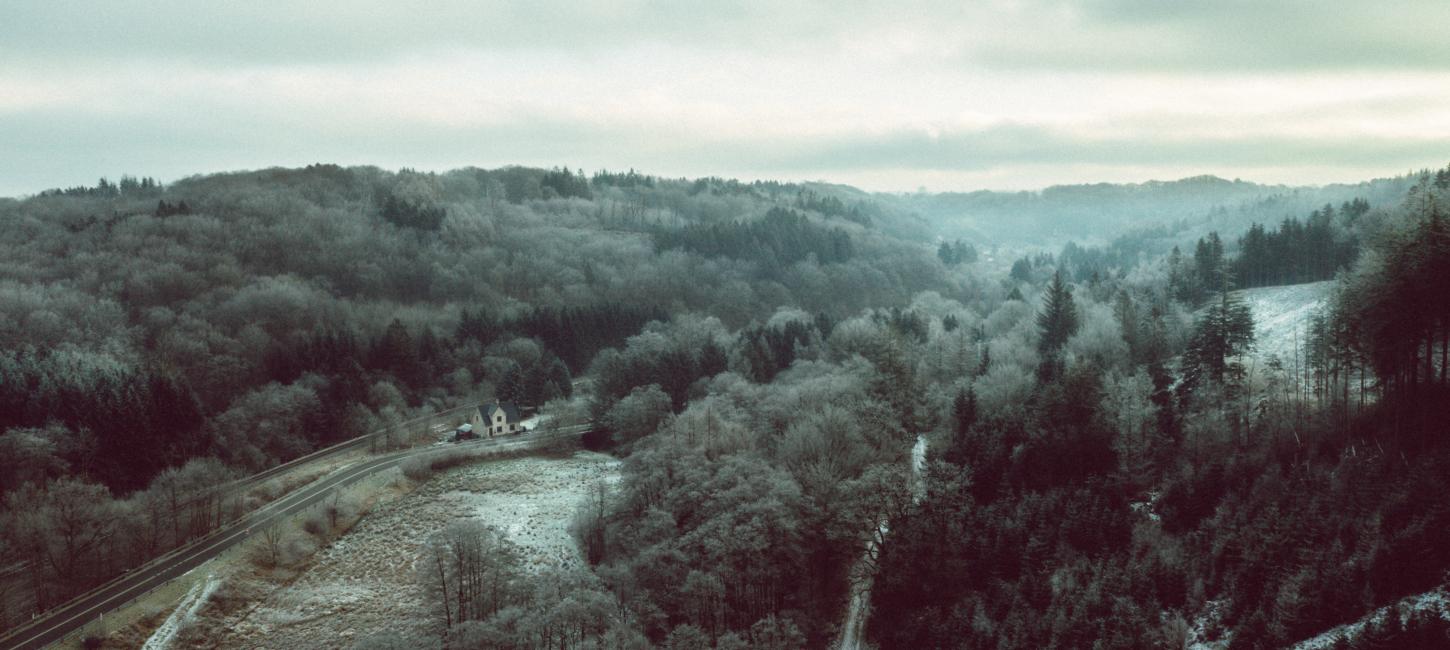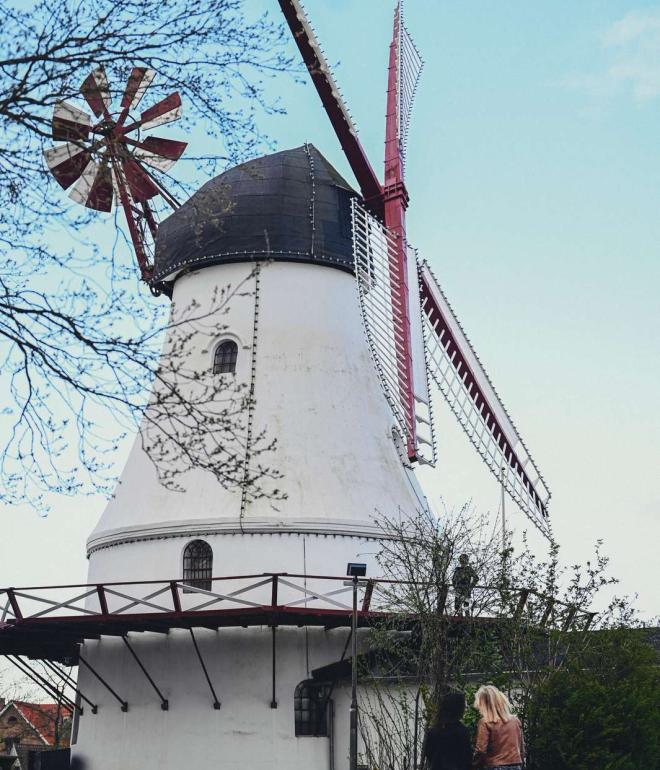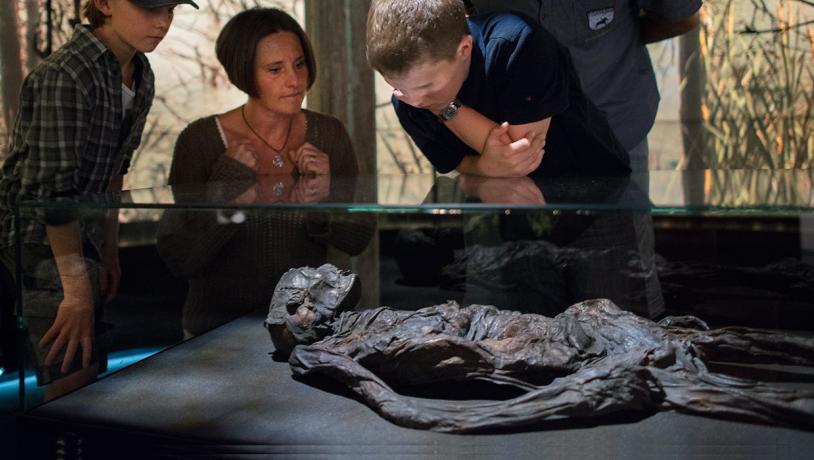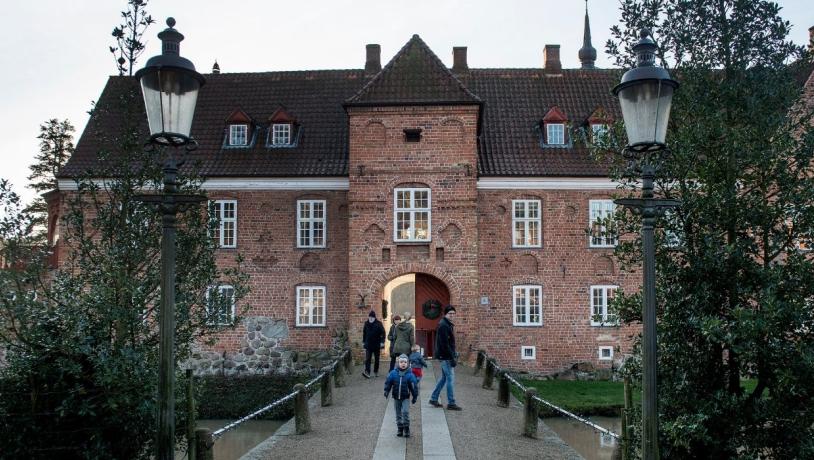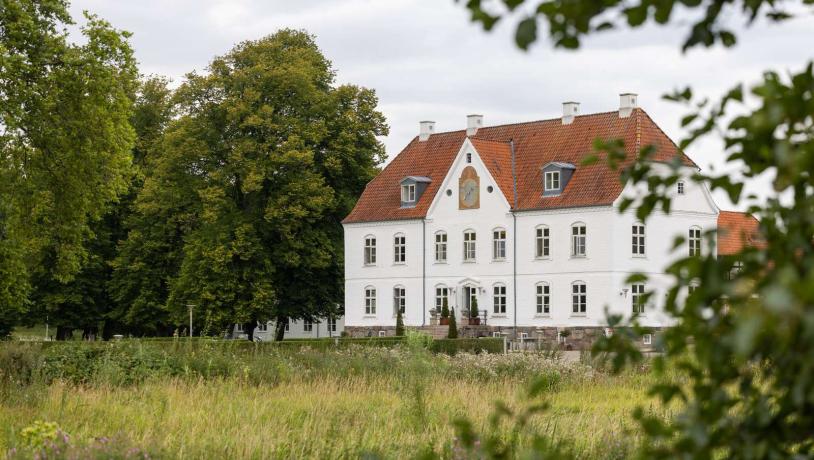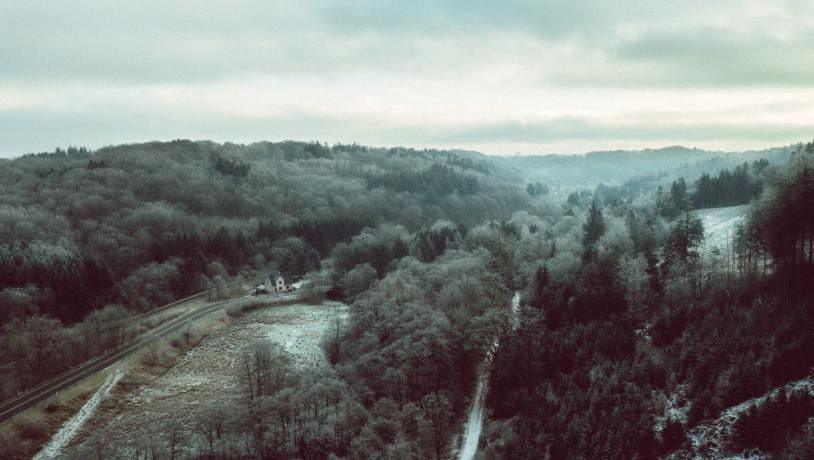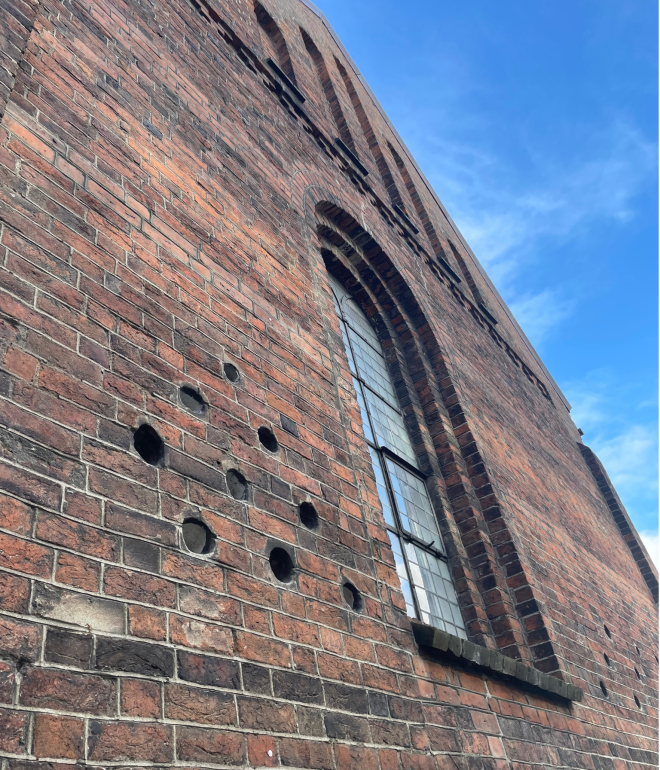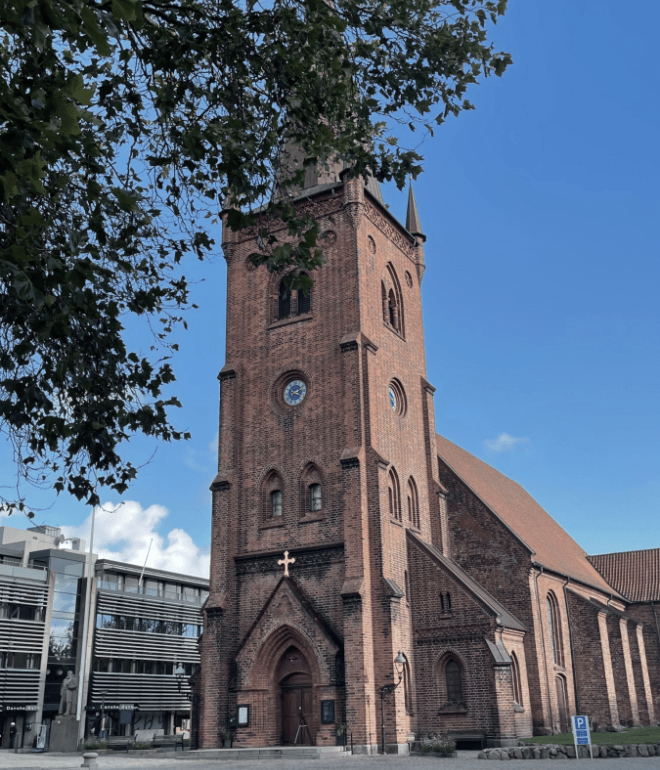Traveling the dark side of Vejle
Experience Vejle's hidden, eerie side with our hair-raising guide. Embark on a journey into Vejle's dark past, filled with mysterious skulls, frightening ghosts, and bloody stories.
By: Emil Thesbjerg
Fjordenhus, Grejsdalen, and the cozy shopping street with shops and cafes. There are many lovely places in Vejle, but beneath the beautiful surface hides all that is mysterious, somber, and eerie. The Vejle area has a long and colorful past, and it's not just filled with sunny stories. In the spirit of Halloween, we have therefore created this hair-raising guide that takes you on a journey into a different kind of dark and spooky Vejle filled with walled-in skulls, terrifying ghosts, bloody executions, and mysterious bog bodies. We guarantee it will be a frightfully good trip!
The Terrifying Gallows Hill
Vejle Windmill is the city's beautiful landmark on the hill in the southern part of the city, offering a fabulous view. However, few know that the site hides a bloody past. Before the first mill was built, the city's gallows hill was located here, and the place has therefore for many years been the scene of beheadings, hangings, and branding.
A particularly cruel execution took place at the gallows hill in 1758. The otherwise respected tanner of the city, Jacob Mortensen, had the year before been replacing some posts in his fence, and when it was time to eat, he called for his seven-year-old daughter Karen. When she did not show up, Jacob became furious. He had had a few drinks, and when she finally came running towards him, Jacob chose to lash out at her. According to the tradition, however, he forgot that he was holding an axe from working on the fence in his hand, and he tragically hit little Karen in the head with it. Karen died from the blow, and although Jacob confessed to his act, he was sentenced to death. The punishment was excruciatingly painful. Jacob was first pinched with hot tongs by the executioner at the place where the murder had been committed, then in Vejle's square, and finally at the gallows hill. Afterward, Jacob's right hand was chopped off with an axe while he was still alive, and finally, his head was cut off. The punishment did not end there. Jacob's body was then laid on a wheel and stake, while his hand and head were placed on a spike. Here, Jacob's earthly remains were to hang as a fright and warning. When one today enjoys the sight of the beautiful mill, it is easy to shudder at the thought of what bloody executions took place in the past on this now idyllic mill hill.
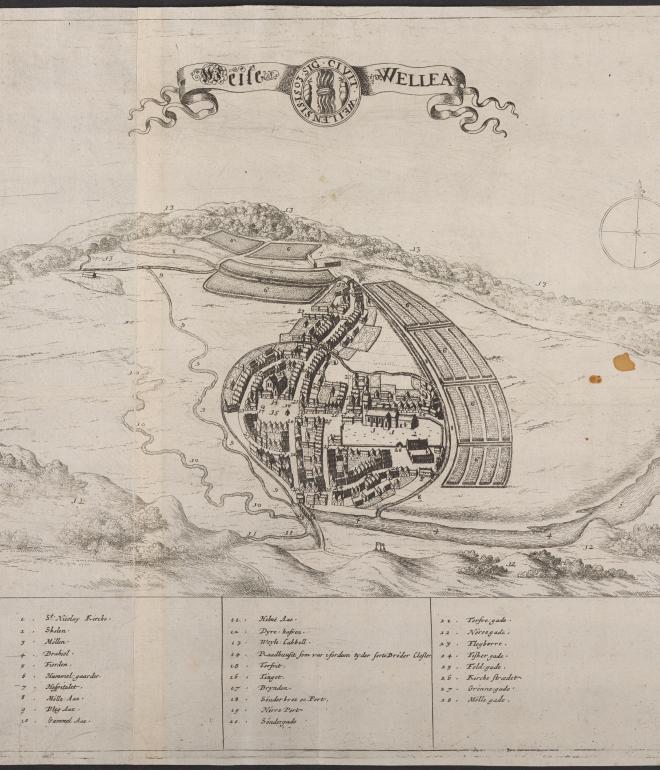
Map of Vejle from 1677. Note the gallows hill.
The Mysterious Bog Body
At the Cultural Museum in the Spinderihallerne, you can travel back in time and experience a body from the Iron Age that likely met a violent death. For 2000 years, the Haraldskær Woman lay in a bog just outside Vejle. Why she ended up there, we do not know, but the bog has preserved her body, while a groove around her neck may indicate that she was strangled before she was placed in the bog. Perhaps she was to be sacrificed to the gods, as the bog was considered a gateway to another world. It could also be that she was punished for a crime. The Haraldskær Woman is one of the world's best-preserved bog bodies, and if you visit her at the Cultural Museum in Vejle, where admission is free, you can speculate about the eerie fate she suffered.
Photo:Mads Hansen
Scary ghosts
Most people might not believe in ghosts, but still, many stories of mysterious incidents and strange experiences abound. Vejle is no exception, and especially in the area's old manor houses, there are many tales of eerie revenants from the past.
The ghost of Tirsbæk Manor
At Tirsbæk Manor, it is said that a grey lady walks again. Back in 1752, the young lord of Tirsbæk, Christen de Linde, married the beautiful Maren Loss. The marriage was frowned upon, as Maren was just a cobbler's daughter, but the animosity towards her only grew after Christen died under mysterious circumstances just four years later. Shortly after, Maren remarried - now to the handsome bailiff, Jørgen Hvas. Therefore, people began to suspect Maren of having killed Christen to inherit the manor and marry the bailiff. That is why it is said that she now walks again at Tirsbæk as punishment for her deed.
Photo:Mads Hansen
The ghost of Haraldkær
If you visit the Haraldskær Manor, which today also serves as a hotel, you might encounter a white lady. The story goes that a young woman, who died of grief due to unrequited love, walks again every night from Skibet Church, through the old fireplace room, and down to Vejle River. So, it's wise to look over your shoulder if you find yourself in these parts at night.
Photo:TheTravelBook
Ghosts in the valley of Grejs
If you find yourself in the beautiful Grejs Valley and darkness begins to fall, you should be cautious. Near the Grejs Rocks, you might encounter seven will-o'-the-wisps moving in circles around the rock. According to legend, they illuminate a chest of gold coins that is said to be hidden in the rock. There might be some truth to the story, as some foresters found no less than 16 Swedish silver coins near a spring not far from the rocks in the late 19th century. If you're on a night walk in Grejs Valley and start hearing deep sighs and weeping, it might be a good idea to turn back. At the deep ravine called "The Maiden's Deep" opposite the viewpoint Høje Knøs, lights can supposedly be seen flickering at the bottom of the deep gorge on moonlit nights. The heart-wrenching sighs are said to come from a young female figure in white attire, running back and forth between the slopes with her arms stretched out in front of her. According to legend, the woman was betrayed by her beloved, and in despair, she threw herself into The Maiden's Deep, where she now haunts.
Photo:Jonas Normann
The Church with the walled-in skulls
The Church with the walled-in skulls From the Town Hall Square, the journey goes down Church Street to Saint Nicolai Church, which is Vejle's oldest building from the Middle Ages. The church was built in the mid-13th century, and if you look at the north wall, you will notice 23 holes that hold a gruesome secret. Each hole contains a walled-in skull, and it is not known for certain who they belong to. A myth suggests that the skulls come from robbers who were executed for their crimes and had their skulls walled in as a deterrent and warning. Another story claims that the skulls are from Polish soldiers executed during the Thirty Years' War. Regardless of where the skulls came from, it can certainly send a chill down your spine when you pass the 23 holes in the church wall on a dark evening.
